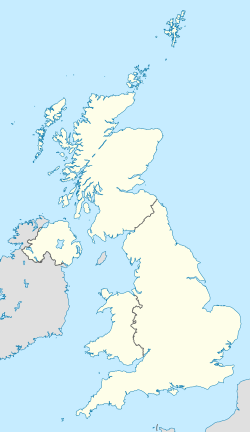Countries of the United Kingdom
| Countries of the United Kingdom | |
|---|---|
| Category | Administrative division |
| Location | United Kingdom |
| Found in | Legal jurisdictions |
| Number | 4 |
| Possible status | NUTS 1 region (3) European constituency (3) Legal jurisdiction (3) |
| Additional status | Home Nations |
| Government | Devolved legislature (3) None (1) |
The United Kingdom (UK) comprises four countries: England, Scotland, and Wales (which collectively make up Great Britain) and Northern Ireland[1][2] (which is variously described as a country, province or region).[3][4][5]
Although the UK is a unitary sovereign state, Northern Ireland, Scotland, and Wales have gained a degree of autonomy through the process of devolution. The UK Parliament and British Government deal with all reserved matters for Northern Ireland, Scotland, and Wales, but not in general matters that have been devolved to the Northern Ireland Assembly, Scottish Parliament and National Assembly for Wales. Additionally, devolution in Northern Ireland is conditional on co-operation between the Northern Ireland Executive and the Government of Ireland (see North/South Ministerial Council) and the British Government consults with the Government of Ireland to reach agreement on some non-devolved matters for Northern Ireland (see British–Irish Intergovernmental Conference). England, comprising the majority of the population and area of the United Kingdom,[6][7] remains fully the responsibility of the UK Parliament centralised in London.
England, Northern Ireland, Scotland, and Wales are not themselves listed in the International Organization for Standardization (ISO) list of countries. However the ISO list of the subdivisions of the UK, compiled by British Standards and the UK's Office for National Statistics, uses "country" to describe England, Scotland, and Wales.[8] Northern Ireland, in contrast, is described as a "province" in the same lists.[8] Each has separate national governing bodies for sports and compete separately in many international sporting competitions, including the Commonwealth Games. Northern Ireland also forms joint All-Island sporting bodies with the Republic of Ireland for most sports, including rugby union.[9]
The Channel Islands and the Isle of Man are dependencies of the Crown and are not part of the UK. Similarly, the British overseas territories, remnants of the British Empire, are not part of the UK.
Historically, from 1801, following the Acts of Union, until 1921 the whole island of Ireland was a country within the UK. Ireland was split into two separate jurisdictions in 1921: Southern Ireland and Northern Ireland. Southern Ireland left the United Kingdom, secured full independence and became the Republic of Ireland in 1919.
Contents
Key facts[edit]
Name | Flag | Capital | Legislature | Executive | Legal systems | Jurisdiction |
|---|---|---|---|---|---|---|
England | London | none1 | none2 | English law | England and Wales | |
Northern Ireland | none3 | Belfast | Northern Ireland Assembly | Northern Ireland Executive | Northern Ireland law, Irish land law | Northern Ireland |
Scotland | Edin-burgh | Scottish Parliament | Scottish Government | Scots law | Scotland | |
Wales | Cardiff | National Assembly for Wales | Welsh Government | English law, Welsh law | England and Wales | |
United Kingdom | London | UK Parliament | UK Government | UK law | United Kingdom |
1 The UK Parliament makes all English legislation, whilst the London Assembly scrutinises the Mayor of London.
2 The UK Government, the Mayor of London and their Mayoral cabinet, Metro Mayors and combined authorities, and the councils of Cornwall and the Isles of Scilly exercise executive power in England.
3 The former flag of Northern Ireland, the Ulster Banner, is still used in some sport-related contexts.

No comments:
Post a Comment